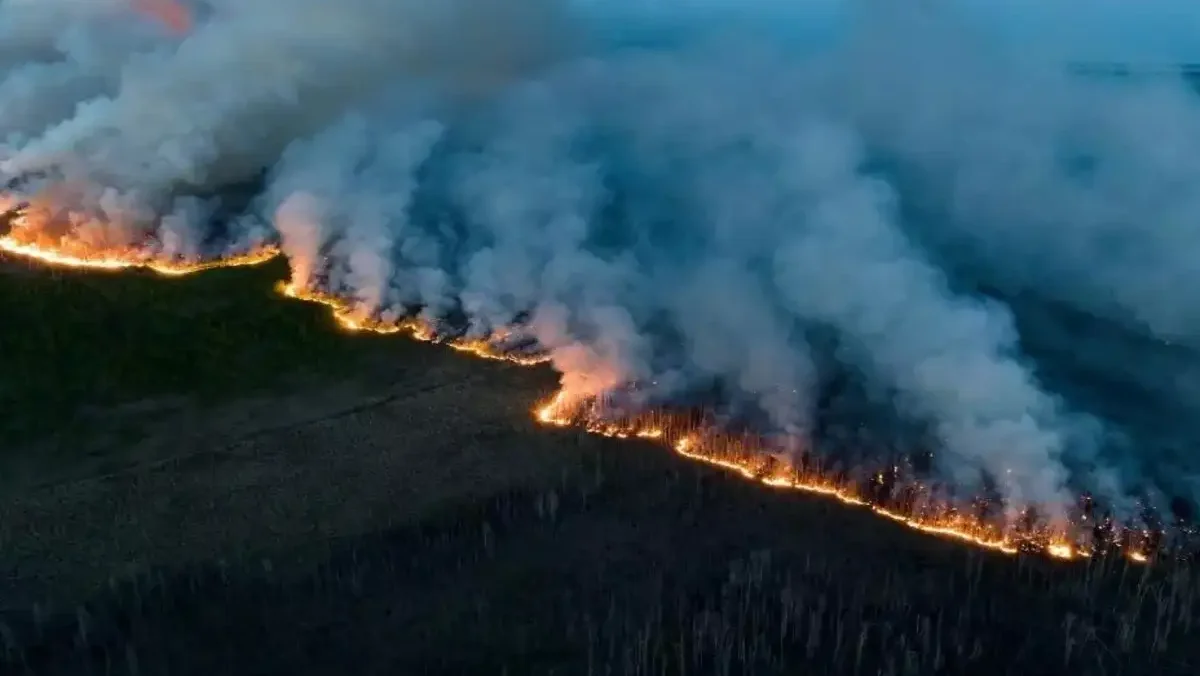Canada is facing one of its worst wildfire seasons in recent years. These intense and widespread fires are not only destroying forests and homes but also causing worries far beyond the country’s borders. The flames are now threatening the global supply of oil, which could affect energy prices and industries worldwide.
The Scale and Impact of Canadian Wildfires
Since early spring, wildfires have been burning across many parts of Canada, especially in the western provinces like British Columbia and Alberta. The fires have grown rapidly because of dry weather and high temperatures, conditions experts say are becoming more common due to climate change.
These fires have forced thousands of people to evacuate their homes. Emergency crews are working around the clock to control the flames, but many fires are still spreading. The damage to forests and wildlife habitats is huge, but the impact on oil production and transport is causing growing concern.
Why Canadian Wildfires Affect Global Oil Supply
Canada is one of the world’s largest oil producers. It exports millions of barrels of crude oil each day, mainly from its oil sands in Alberta. This oil is important to many countries, including the United States, which buys much of its oil from Canada.

Wildfires close to oil production sites and pipelines can disrupt operations. Smoke and fire damage can halt oil extraction and delay transportation. Road closures and evacuation orders also make it harder for workers to reach oil fields. Some pipelines may face safety risks if fires get too close.
All these disruptions reduce the amount of oil Canada can produce and export, which can cause shortages in the global market.
Effects on Global Energy Markets and Prices
When supply decreases, oil prices usually go up. Already, energy markets are watching the Canadian wildfire situation closely. Any significant drop in Canadian oil exports could push prices higher worldwide, making gasoline, heating oil, and other fuel products more expensive.
Higher energy costs affect not only consumers but also industries that rely heavily on oil and gas. Transportation, manufacturing, and agriculture are just a few sectors that may face rising expenses. This could lead to higher prices for everyday goods and impact economic growth in many countries.
The Role of Climate Change in Increasing Wildfire Risks
Experts agree that climate change is playing a big role in making wildfires more frequent and severe. Warmer temperatures dry out forests and make them more flammable. Changes in rainfall patterns also affect the health of forests, leaving them vulnerable to fires.
Canada’s wildfire season has been longer and more intense over recent years. Scientists warn that if global temperatures continue to rise, wildfires like these could become a common problem, affecting natural resources and industries worldwide.
What Canada Is Doing to Manage the Crisis

Canadian authorities are taking strong measures to control the wildfires and limit their damage. Thousands of firefighters and volunteers are working on the frontlines. The government is also providing financial support to affected families and businesses.
In addition, there are efforts to improve forest management and wildfire prevention techniques. However, dealing with wildfires in a changing climate remains a major challenge.
Looking Ahead: Global Implications and the Need for Action
The wildfires in Canada serve as a reminder of how interconnected the world’s energy systems are. A natural disaster in one region can quickly ripple through global markets and affect millions of people.
The situation also highlights the urgent need for countries to work together on climate change. Reducing greenhouse gas emissions and investing in clean energy sources can help reduce the risk of extreme wildfires and the disruptions they cause.
In the short term, oil markets will likely remain volatile as the wildfire season continues. Consumers and businesses should prepare for possible price changes and supply uncertainties.
Also read: Aramco Slashes Dividends: Is Saudi Arabia’s Financial Future at Risk?



